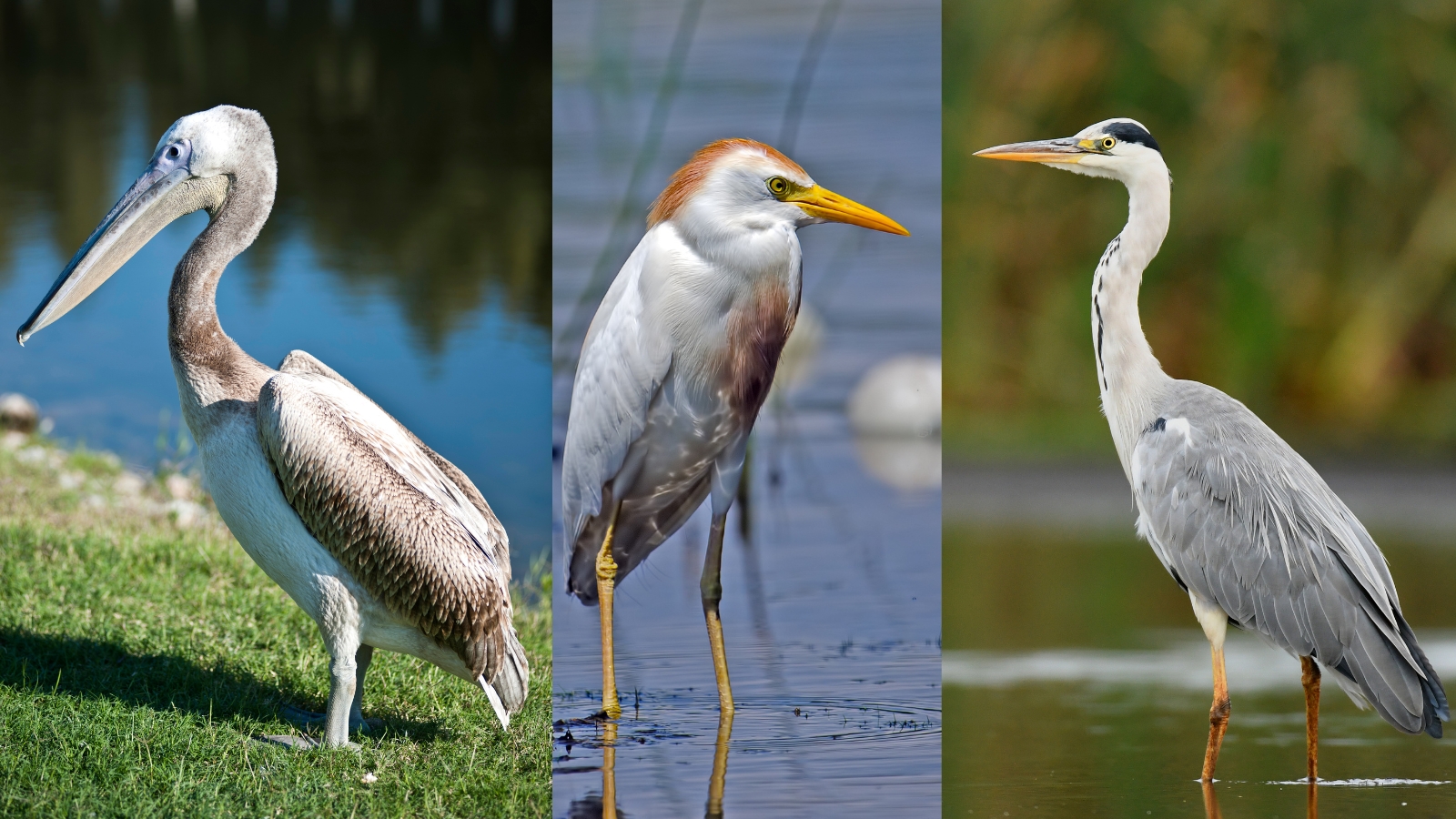Florida water birds represent some of North America’s most diverse and fascinating wildlife species. With over 150 different types of water birds calling Florida home, these remarkable creatures inhabit the state’s extensive network of wetlands, coastlines, and waterways.
From the iconic great blue herons stalking prey in shallow waters to the majestic wood storks soaring overhead, Florida water birds showcase nature’s incredible adaptations to aquatic environments.
In this comprehensive guide to Florida water birds, we’ll explore everything from identification tips to conservation efforts.
Whether you’re a bird enthusiast, photographer, or nature lover, understanding these remarkable creatures will enhance your appreciation of Florida’s rich natural heritage.
Key Takeaways
- Florida hosts more than 150 species of water birds across diverse aquatic habitats
- Common Florida water birds include herons, egrets, ibises, and pelicans
- Prime viewing locations include the Everglades, coastal refuges, and inland waterways
- Conservation efforts are crucial for protecting Florida water birds and their habitats.
Understanding Florida Water Birds: Essential Species Guide
Florida water birds come in various shapes and sizes, each specially adapted to their particular ecological niche.
Here’s a comprehensive look at the most common species you’ll encounter:
Wading Birds of Florida
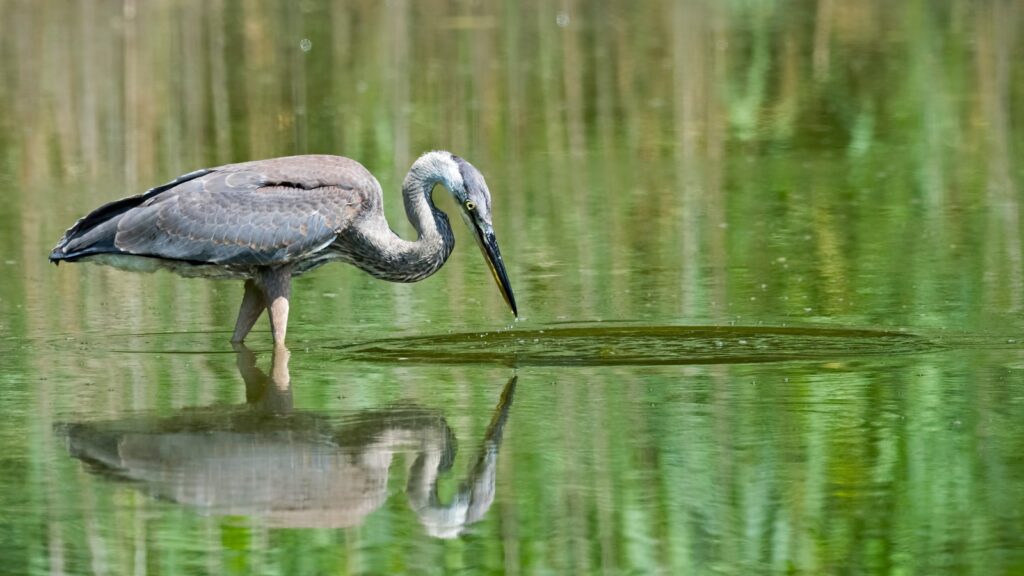
- Great Blue Heron
- Height: Up to 115 centimetres
- Distinctive blue-grey plumage
- Expert fish hunter in shallow waters
- Found throughout Florida’s wetlands.
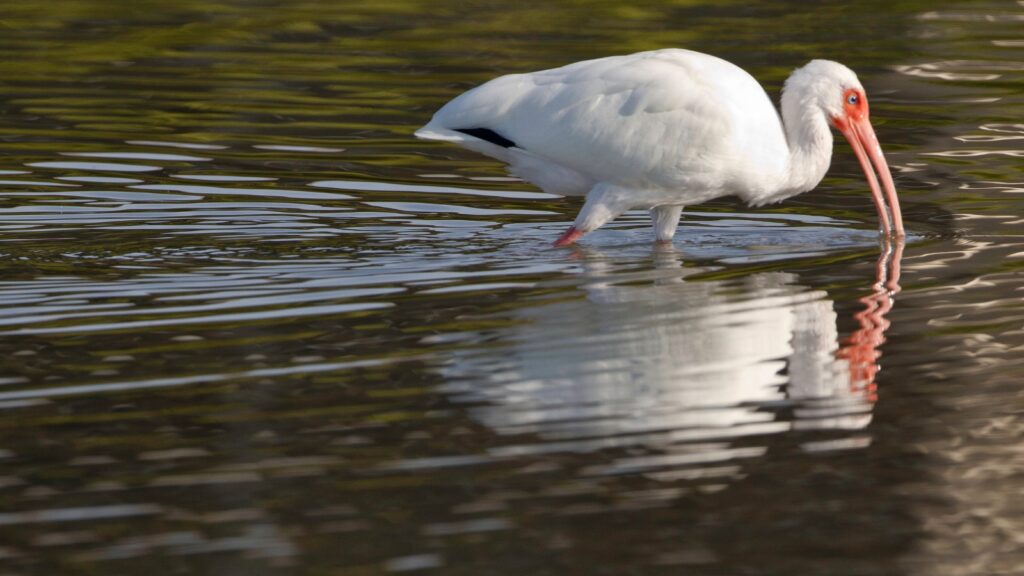
- White Ibis
- Curved red bill
- Pure white plumage
- Social feeders in groups
- Common in urban and natural areas.
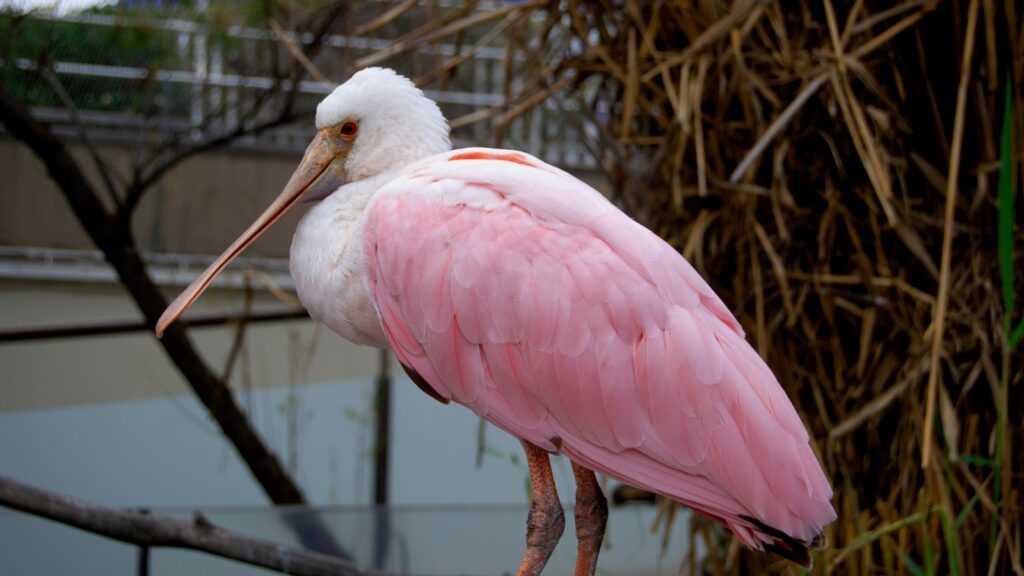
- Roseate Spoonbill
- Pink plumage
- Distinctive spoon-shaped bill
- Often seen in mangrove swamps
- Increasingly common in South Florida.
Coastal Water Birds
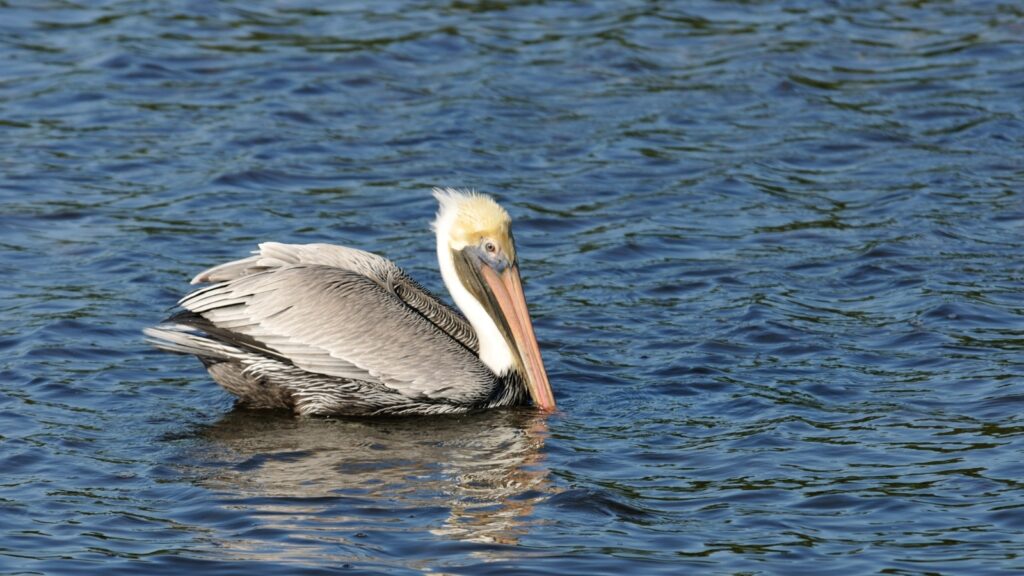
- Brown Pelican
- Common coastal resident
- Skilled plunge-divers
- Year-round presence in Florida
- Often seen on piers and docks.
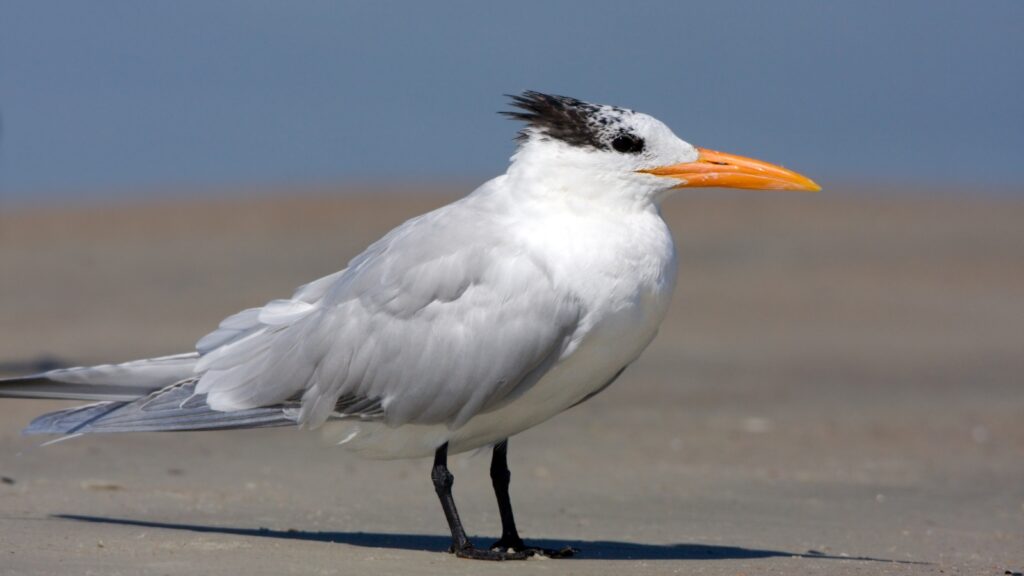
- Royal Tern
- Black head crest
- Orange bill
- Colonial nesters
- Expert fish catchers
Florida Water Birds Habitats: Where to Find Them
Understanding where Florida water birds live helps in locating and observing different species:
Coastal Wetlands
- Mangrove swamps provide protected nesting sites
- Tidal flats offer rich feeding grounds
- Salt marshes support diverse bird populations
- Coastal islands host breeding colonies.
Inland Waterways
- Lakes and ponds attract diving birds
- Rivers provide linear migration corridors
- Marshes offer protected breeding areas
- Swamps support year-round residents.
Best Locations for Watching Florida Water Birds
Popular Viewing Sites
- Everglades National Park
- Largest natural habitat for water birds
- Accessible boardwalks and viewing platforms
- Guide services available
- Best viewing during winter months.
- Merritt Island National Wildlife Refuge
- Diverse species concentration
- Multiple observation points
- Excellent photography opportunities
- Seasonal migration stopovers.
- J.N. “Ding” Darling National Wildlife Refuge
- Famous for wading birds
- Driving tour available
- Morning hours best for viewing
- Photography workshops offered.
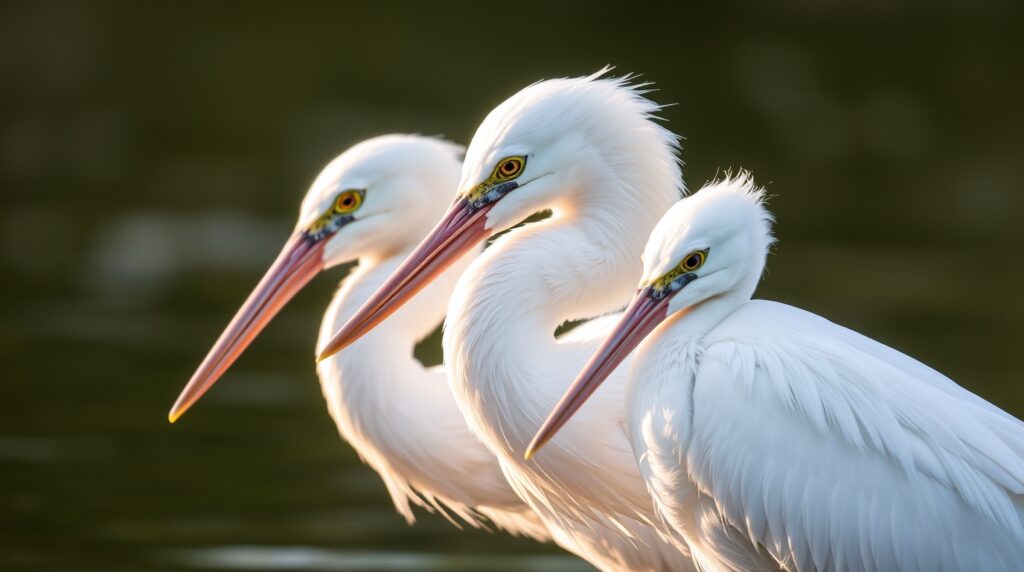
Florida Water Birds Identification Guide
Physical Characteristics
- Size comparisons
- Bill shapes and uses
- Plumage patterns
- Flight profiles
- Seasonal variations.
Behavioural Patterns
- Feeding techniques
- Social groupings
- Nesting habits
- Territorial displays
- Migration behaviors.
Conservation of Florida Water Birds
Current Challenges
- Habitat loss from development
- Climate change impacts
- Water pollution threats
- Human disturbance effects.
Protection Measures
- Habitat restoration projects
- Protected area designation
- Public education programmes
- Scientific monitoring efforts.
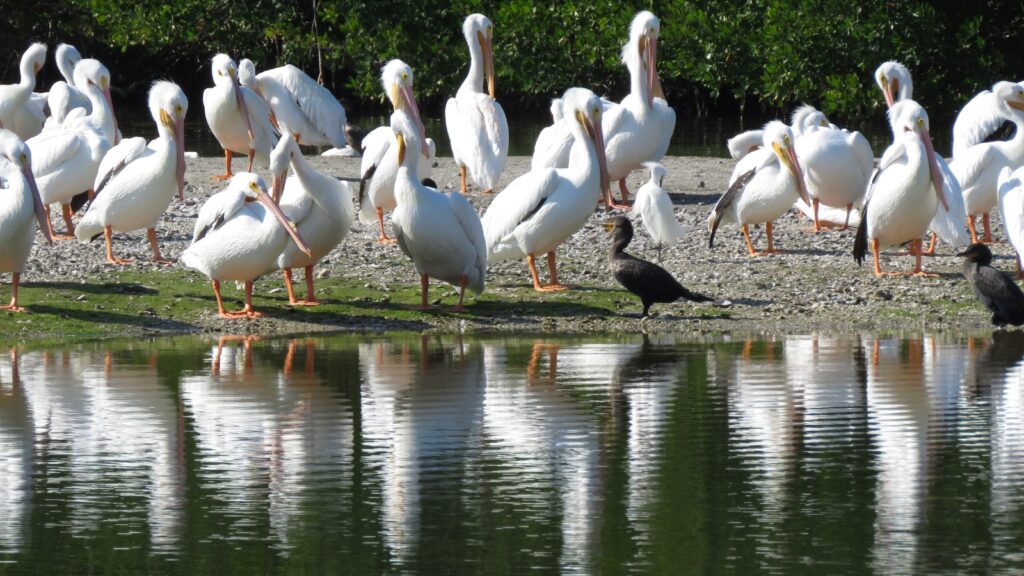
Photography Tips for Florida Water Birds
Equipment Recommendations
- Long telephoto lenses (400mm minimum)
- Sturdy tripod support
- Weather protection gear
- Appropriate clothing for conditions.
Technique Guidelines
- Early morning lighting best
- Approach strategies for close-ups
- Composition rules for wildlife
- Behaviour anticipation skills.
Seasonal Guide to Florida Water Birds
Winter (December-February)
- Peak migration period
- Largest variety of species
- Best overall viewing time
- Comfortable weather conditions.
Spring (March-May)
- Breeding season begins
- Courtship displays
- Nesting activities
- New offspring appear.
Summer (June-August)
- Resident species active
- Young birds learning to fly
- Early morning viewing recommended
- Hot weather precautions needed.
Autumn (September-November)
- Fall migration begins
- Changing species mix
- Pleasant viewing conditions
- Less crowded viewing areas.
Final Thoughts
Florida water birds represent one of nature’s most spectacular displays of adaptation and diversity. These remarkable creatures not only enhance Florida’s natural beauty but also serve as indicators of environmental health.
Understanding and protecting Florida water birds ensures their survival for future generations to enjoy and study.
The future of Florida water birds depends on continued conservation efforts, research, and public awareness. Whether you’re observing these magnificent creatures for pleasure or studying them for science, each encounter with Florida water birds offers a unique opportunity to connect with nature.
Together, we can ensure these remarkable birds continue to grace Florida’s waters for generations to come.
